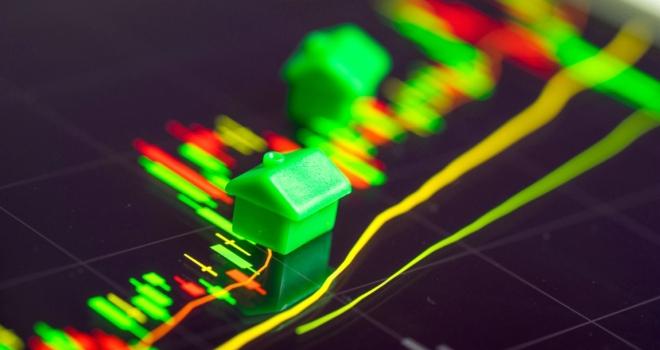
Mixed signals around the UK economy became even more scrambled in the first week of the year. While manufacturing fell at the fastest pace in 11 months, annual house price growth rose to its highest rate since November 2022. Even more confusingly, both statistics were announced on the same day.
The manufacturing data, which saw the pound drop to its lowest level since May, is the latest in a series of weak readings since the Budget. Businesses are concerned about the impact of higher costs, including a rise in employer national insurance, and shaky Christmas retail figures underlined the impact on consumer confidence.
There are two reasons why house prices are currently out of sync.
First, a number of buyers are sitting on sub-4% mortgage offers made before the Chancellor announced her economic plans on 30 October. Agreements are valid for up to six months, which means some will be insulated from the increase in borrowing costs triggered by the Budget.
Bond yields have risen as financial markets price in the inflationary risks of a government planning to borrow and spend more. The five-year interest rate swap (used to price fixed-rate mortgages of the same length) was 4.3% last week compared to 3.8% in early October.
Financial markets are currently expecting between two and three quarter-point cuts to the bank rate by the end of 2025, which is about three fewer than they anticipated in September.
Another set of data released last week could be a warning sign of what is to come. Mortgage approvals in November fell to their lowest level since August and the squeeze on demand is likely to tighten as rising borrowing costs start to bite.
The other factor supporting house prices is an imminent change to the rate of stamp duty.
The nil rate band for stamp duty reverts to £125,000 from £250,000 in April, which means bills will rise by up to £2,500. A similar reversion means up to £6,250 in additional stamp duty for first-time buyers.
Even the prospect of a relatively small saving can temporarily boost trading volumes, as we saw during the stamp duty holiday of the pandemic. April might not be the cruellest month for the UK housing market in 2025, but a lull would be understandable.
How will the rest of the year pan out?
Our latest forecasts can be found here. We revised down our expectations slightly as borrowing costs are likely to stay higher for longer and economic growth struggles to gain momentum. With wage inflation still stubbornly high, it has sparked speculation about the possibility of ‘stagflation’, a situation where economic growth is slow while prices and unemployment rise.
The unenviable dilemma for a central bank in this situation is whether to cut rates in an attempt to boost growth or keep rates high to tame inflation.
“There is a danger of overdoing the gloom,” independent economist Julian Jessop said on X/Twitter after inflation climbed to its highest level in eight months just before Christmas. “Most households should still see their real incomes rise. The increases in public spending will also offset at least some of the weakness in the private sector. There should therefore only be a mild bout of stagflation - or 'stagflation-lite' - before inflation falls back and the economy picks up again over the course of 2025.”
For different reasons, the housing market could therefore also have a relatively strong final quarter this year.
Jessop’s comments echo the sentiment of Savvas Savouri, chief economist at QuantMetriks, who says evasive action taken by the private sector will mitigate the impact of the Budget.
For example, there could be a greater reliance on self-employment due to higher rates of employer national insurance or more buoyant housing markets near some state schools due to added VAT costs in the private sector, he said.
With the first major MRP poll since the election at the end of December predicting that Labour would lose its majority, what we do know is that scrutiny around the government’s next steps (including the possibility of further tax rises) will only intensify.





